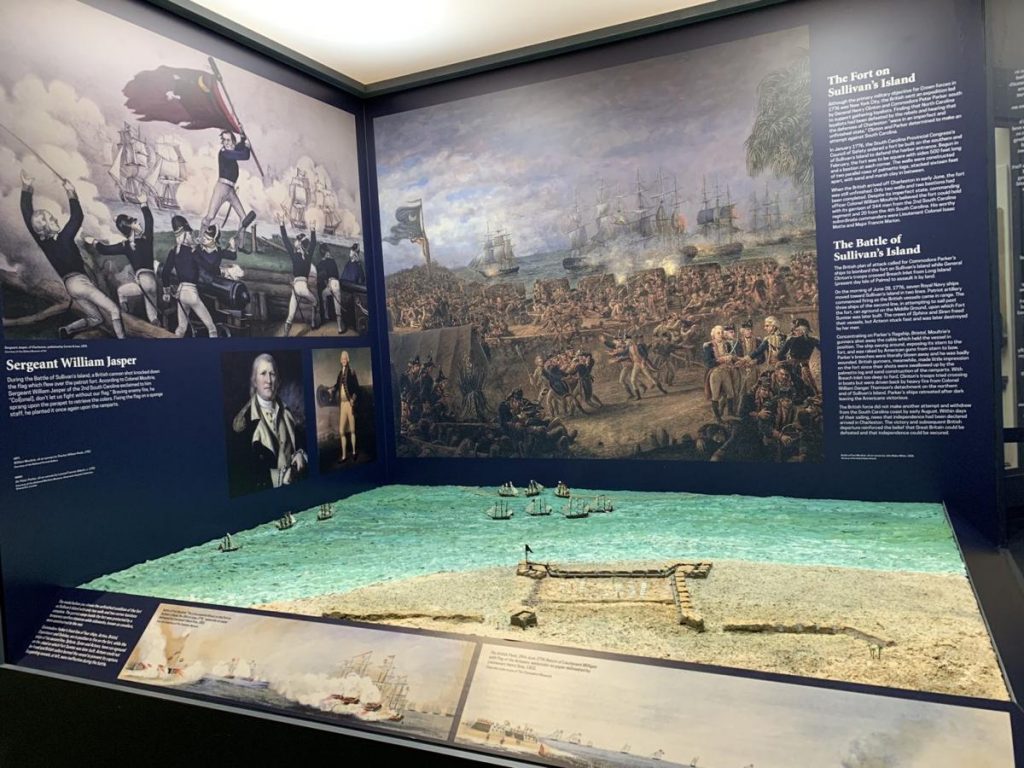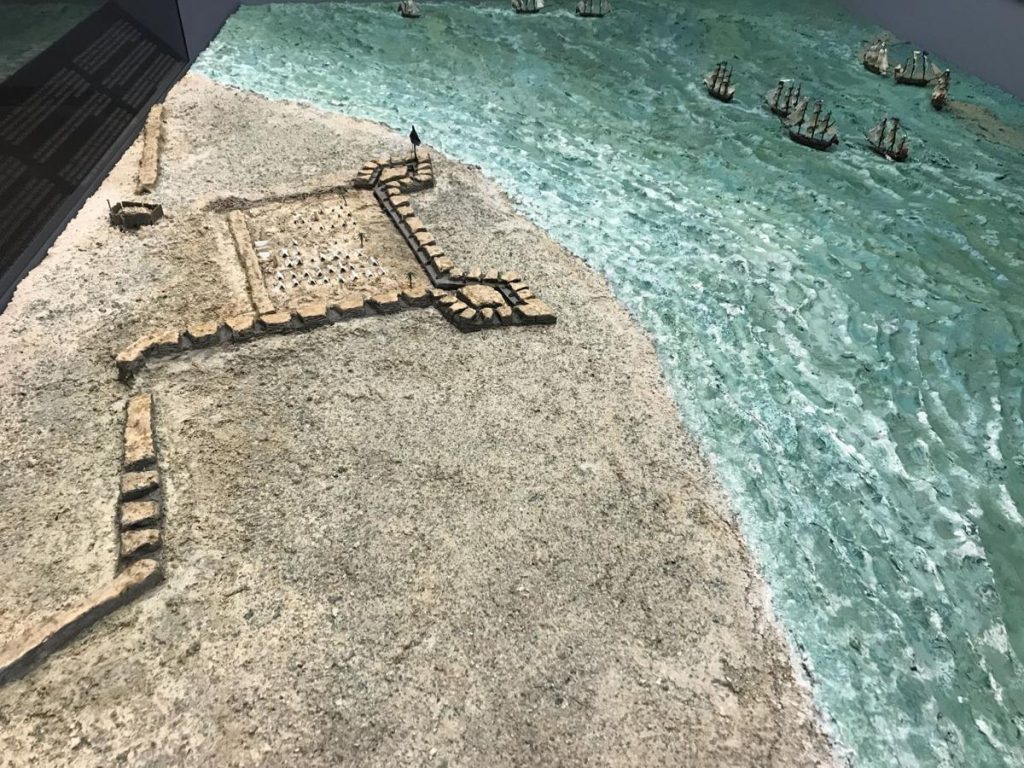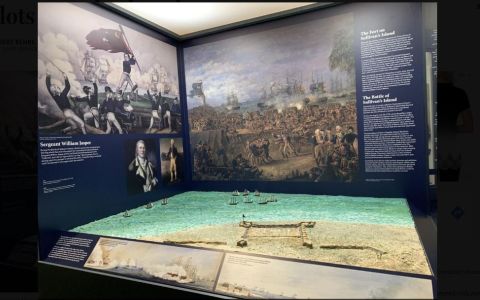It might be one of the more intriguing mysteries behind the Battle of Sullivan’s Island, the 1776 Patriot victory in the Revolutionary War commemorated every June 28 as Carolina Day:
How did enslaved ship-pilots affect the outcome?

The Charleston Museum recently updated its Revolutionary War exhibit, including this diorama of the Battle of Sullivan’s Island.

This diorama in the Charleston Museum depicts the Battle of Sullivan’s Island, where patriots behind a partly finished log fort fended off the Royal Navy at the mouth of Charleston Harbor.
The overall story is well known about the Royal Navy’s unsuccessful attempt to sail into the harbor and capture Charles Towne on June 28, 1776.
A small, partly built fort on Sullivan’s Island strengthened by palmetto logs and led by Col. William Moultrie, withstood fire from nine attacking British warships and successfully returned fire, sinking one.
Their fight was aided by Col. William Thompson, who successfully oversaw a force of 800 patriots on the other side of the island and prevented about 3,000 British soldiers from crossing over from Long Island (now Isle of Palms) to attack the Sullivan’s fort from land.
The patriots had a stroke of good fortune: Moultrie’s men concentrated their fire on just two ships, inflicting heavy damage, and three other frigates maneuvering to attack the fort from the rear got stranded on a sandbar.
Nic Butler, a Charleston historian who has researched the battle and runs the county library system’s Charleston Time Machine podcast, noted the British were relying on enslaved African American pilots familiar with local waters.
Did those pilots remain loyal to the crown, or did they perhaps act as double agents?

“Any way you look at it, it’s a very dramatic situation, and there are all kinds of possibilities we may never know,” Butler said. “Two hundred and fifty years afterward, we still have more stuff to learn.”
Historian Kevin Dawson researched these men in a 2013 article in the Journal of Social History entitled, “Enslaved Ship Pilots in the Age of Revolutions: Challenging Notions of Race and Slavery between the Boundaries of Land and Sea.”
Dawson said these pilots occupied an unusual place during colonial times. Owned mostly by slaveholding merchants, these pilots lived a different kind of life as their nautical skills gave them uncommon privileges other enslaved people didn’t have.
“Like many urban slaves, pilots were entrepreneurs who hired themselves out and lived free of direct white interference, organizing semi-independent lives of privileged exploitation,” he wrote. “Industrious slaves generated considerable incomes for themselves, enhancing their material comfort and that of family members.”
The most prominent enslaved pilot was named Sampson, whose owner Jacob Waldron left the area in 1773 leaving Sampson and another pilot named Mercury to find their own work, mostly through handshake arrangements.
As the British prepared to invade Charleston by impressing Sampson, Mercury and Harry, who were highly skilled slave pilots, along with Shadwell, a schooner captain “well acquainted with all the rivers and inlets to the southward of Charleston,” enabling him to pilot vessels, according to Lawson.
Lawson noted both British and American forces realized slave pilots could influence the war’s outcome and sought to safeguard their own pilots and to capture or kill opposing ones. “There were only few pilots in any given port with about 10 in Revolutionary-era Charleston,” Lawson wrote. “On June 28, 1776, Sampson returned to Charleston aboard Commodore Sir Peter Parker’s flagship, Bristol. Now he led an invading fleet that included several other black pilots.”
The Bristol was seriously damaged and Parker seriously wounded. Sampson was ordered below decks, out of harm’s way, Lawson wrote. “This spared him from injury or death, permitting him to lead subsequent raids along the Carolina-Georgia coast and, on December 29, 1778, he piloted Lieutenant Col. Archibald Campbell’s invasion of Savannah—actions that helped thousands of slaves gain freedom.”
Butler said the question of the enslaved pilots’ influence on the battle puts a new spin on the traditional telling of Carolina Day.
“There were several significant pivot points where the battle could have tipped the other way,” he said, adding the three frigates were trying to maneuver to fire on the unfinished fort from the rear. “If they had succeeded, it would have been over pretty quickly.”
That said, Lawson said he has not uncovered any sources indicating that Sampson or other pilots might have served as double agents. “As you probably know, many slaves initially sided with the British after Lord Dunmore’s (proclamation in 1775), then switched to the Patriots later in the war, choosing to fight for their homes and families.”
The ships’ stranding either were a navigational error based on faulty advice from a pilot or based on a decision to ignore that advice, Butler noted. “Either way you slice it, it boils down to a conversation between mariners in the Royal Navy and an enslaved man,” he said.
–postandcourier.com



